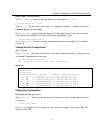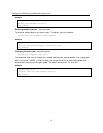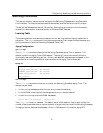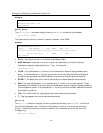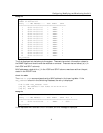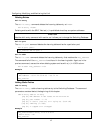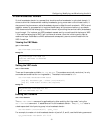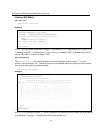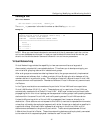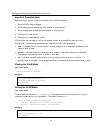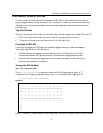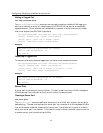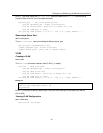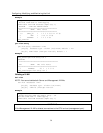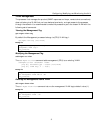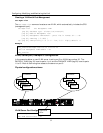
Configuring, Modifying, and Monitoring the Unit
45
Deleting a VBC
del-vbc-domain
del-vbc-domain {run|nvram} <domain_id>
The
domain_id
parameter is the vbc id number as identified by
get-vbc-tbl
.
Example
SYS_telnet>del-vbc-domain run 1
Delete Runtime Virtual Broadcast Domain entry - OK
Runtime VLAN mode is VBC Domain
RUNTIME VIRTUAL BROADCAST DOMAIN TABLE
===========================================
Ports
11111111 7
VBC 12345678 1
2: ----+++- -
NOTE: When you use the set-vbc-domain command with the
all
parameter, both the runtime
and nvram databases are changed. In case you need to delete the mentioned vbc entries, you
should run the del-vbc-domain command twice with run and nvram parameters.
Virtual Networking
Virtual Networking provides the capability to view user communities as a large set of
disconnected, yet potentially connectable stations. This allows you to develop and apply your
own criteria for grouping users within isolated work groups.
After such groups are created considering these criteria, the groups are actually implemented
via hardware and software that, in effect, provide a Virtual Bridging function between all the
member stations in a particular group. This collection of stations, referred to as a Virtual LAN,
shares a common multicast domain. Members of different Virtual LANs can only communicate
via Routers.
In the Figure, most stations are members of a particular Virtual LAN and have a particular
Virtual LAN Number (VLN 2, 3, 4, etc.). Those stations not in a particular Virtual LAN are
automatically members of the “Default Virtual LAN”. MAC-layer unicast and multicast traffic
propagating within this virtual topology can be separated into two groups: traffic passing between
stations within the same Virtual LAN, and traffic passing across Virtual LAN boundaries.
Unicast traffic moving within a Virtual LAN is propagated from its source, directly to its
destination. Other stations are not exposed to this traffic (in contrast to repeated environments)
unless they ultimately share physical segments with either the source or destination specified in
a particular dialog. Multicast traffic is passed to all stations in the Virtual LAN, as if all
stations were connected to a single multi-port switch. Traffic cannot pass between Virtual
LANs without the aid of a Router. These internetworking devices must be physically connected
to the network with a separate physical interface for each Virtual LAN.



